Abstract
Recent evidence has suggested that colonic neoplasm may be missed in patients presenting with iron deficiency anaemia unless colonic investigations are performed on all patients even when an alternative cause has been found. This study prospectively surveyed 114 consecutive patients referred from family practitioners to an outpatient clinic for the investigation of iron deficiency anaemia to determine the diagnoses contributing to the anaemia, the usefulness of certain clinical features, and the role of colonic and other investigations in obtaining the diagnosis. Upper gastrointestinal lesions contributing to anaemia were identified in 45 patients while colonic lesions were found in 18. Twenty three patients had a non-gastrointestinal cause for anaemia and in 12 patients no cause was found. Only two patients were identified as having colonic neoplasia (a small adenomatous polyp in each case) coexisting with upper gastrointestinal lesions. Symptoms and signs had a sensitivity and specificity of upper gastrointestinal disease of 50% and 83% respectively, and 44% and 80% for colonic disease. Endoscopy had a high yield (42%) and duodenal biopsy identified coeliac disease in three patients (two were aged > 70 years) each of whom had normal folate values. Barium enema had a yield of 13%. All colonic carcinomas occurred in patients > 65 years. The coexistence of colonic cancer or large polyps with an upper gastrointestinal lesion identified at endoscopy was rare in outpatients referred from family practitioners. Clinical symptoms and signs were poor indicators of the investigations that will detect a cause for the anaemia.(ABSTRACT TRUNCATED AT 250 WORDS)
Full text
PDF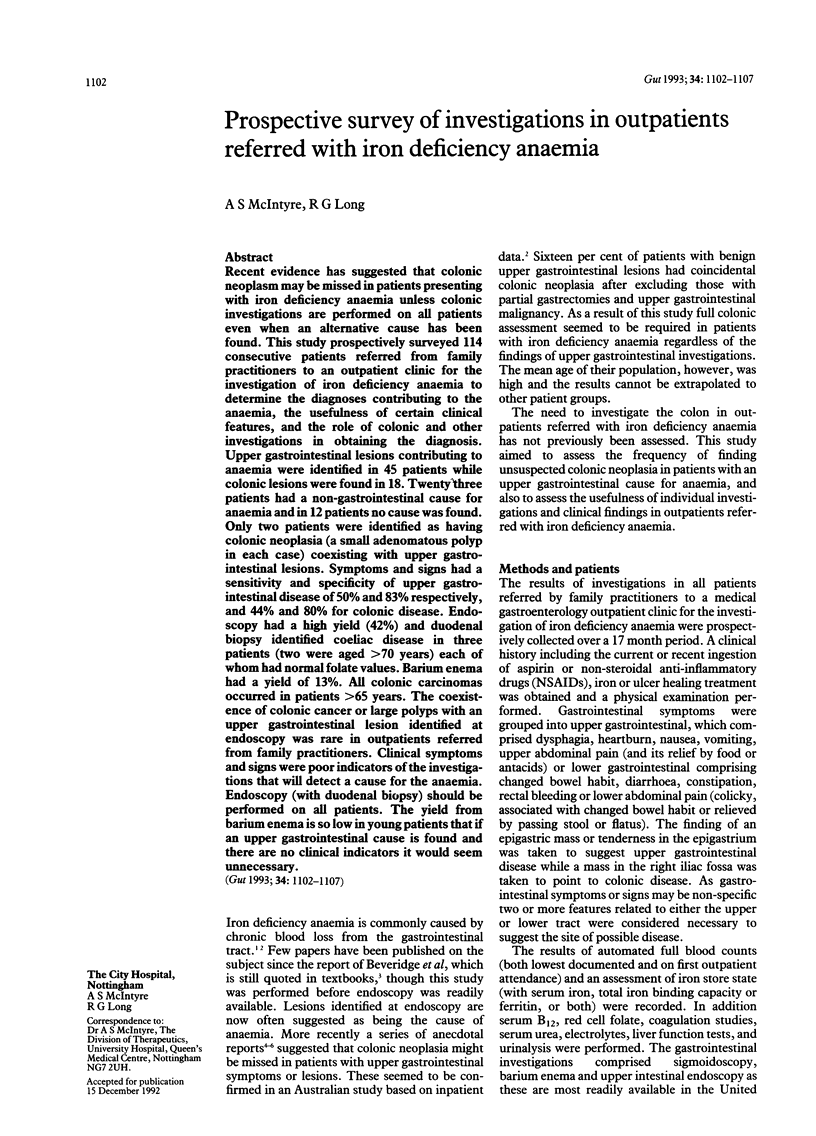
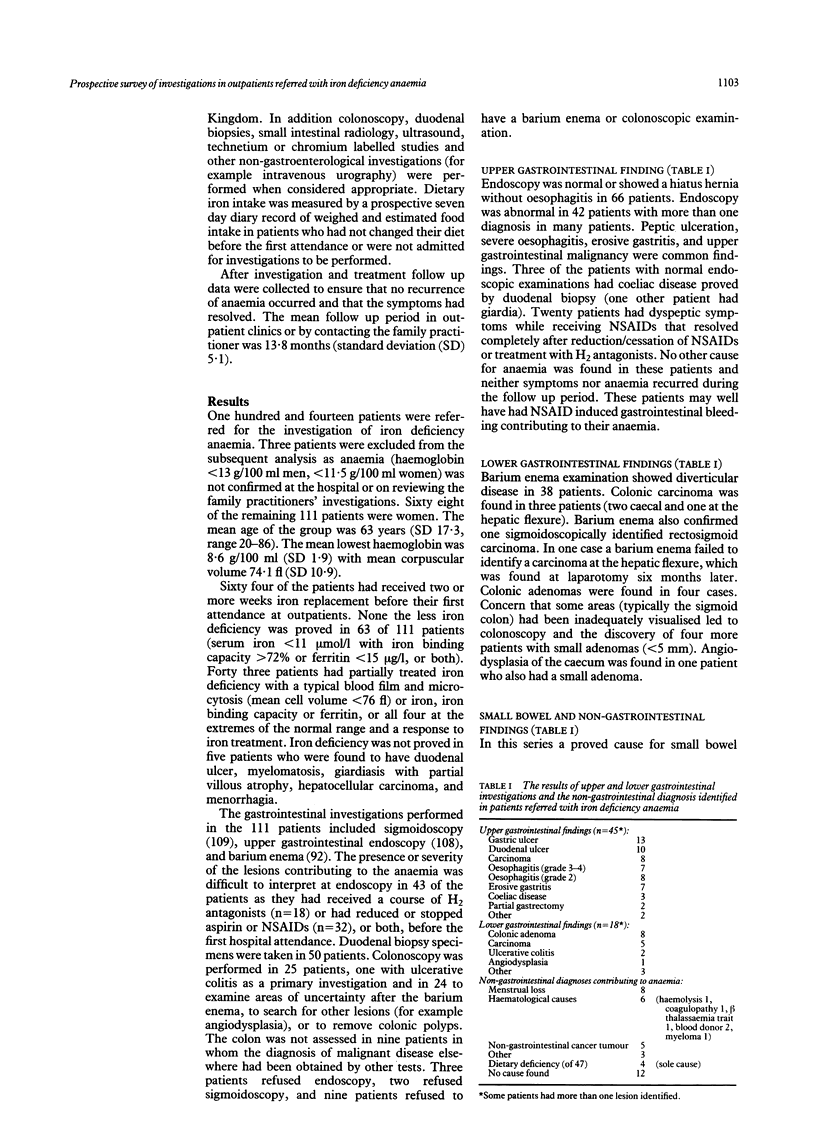
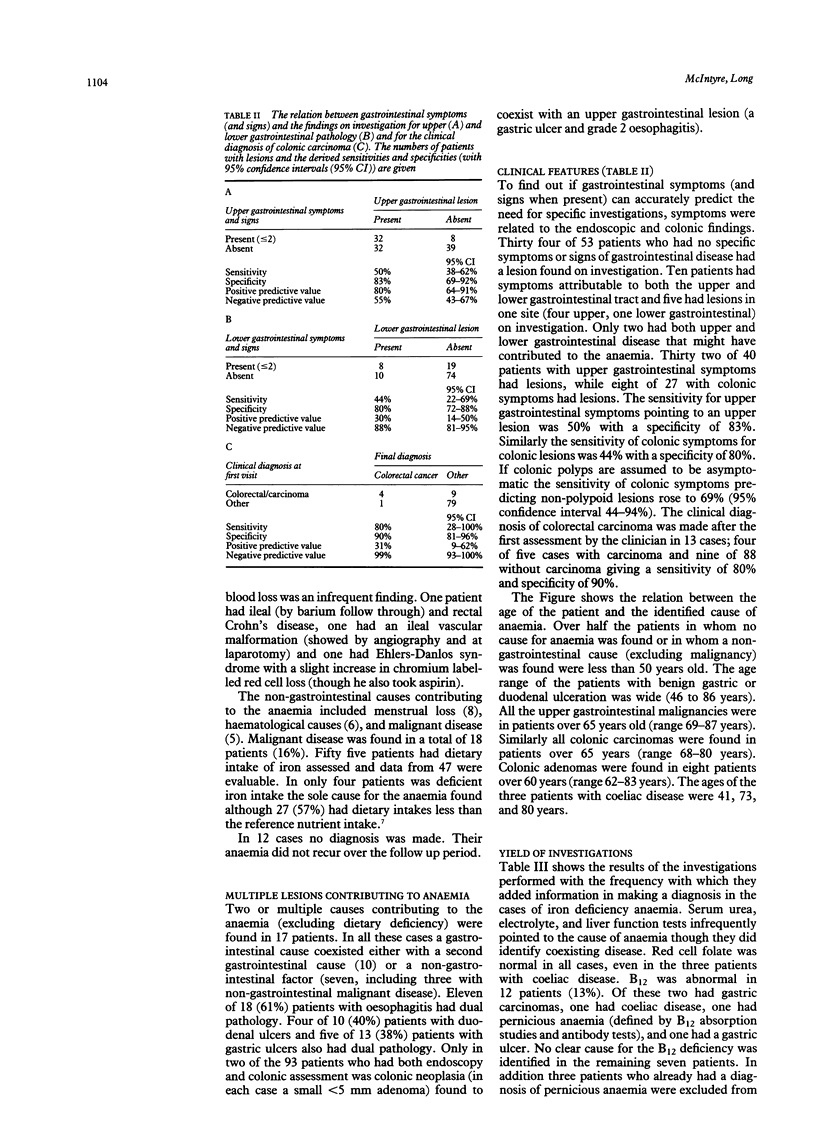
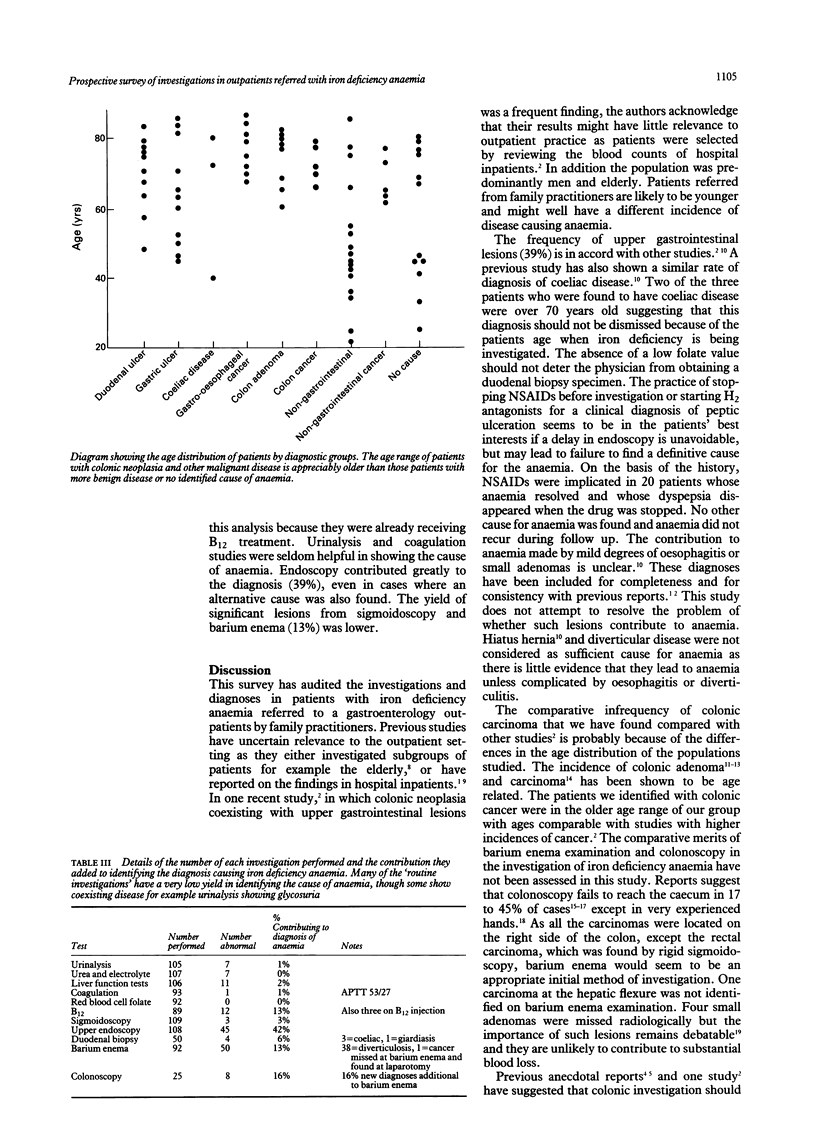
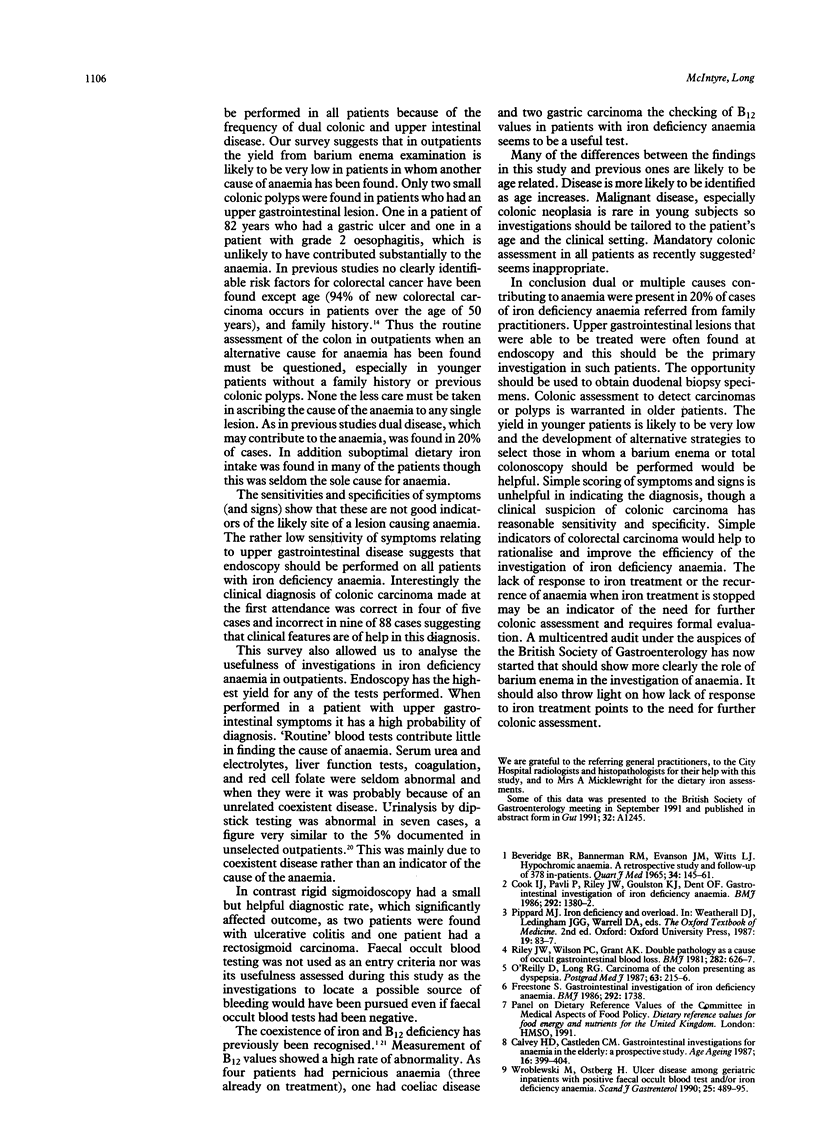
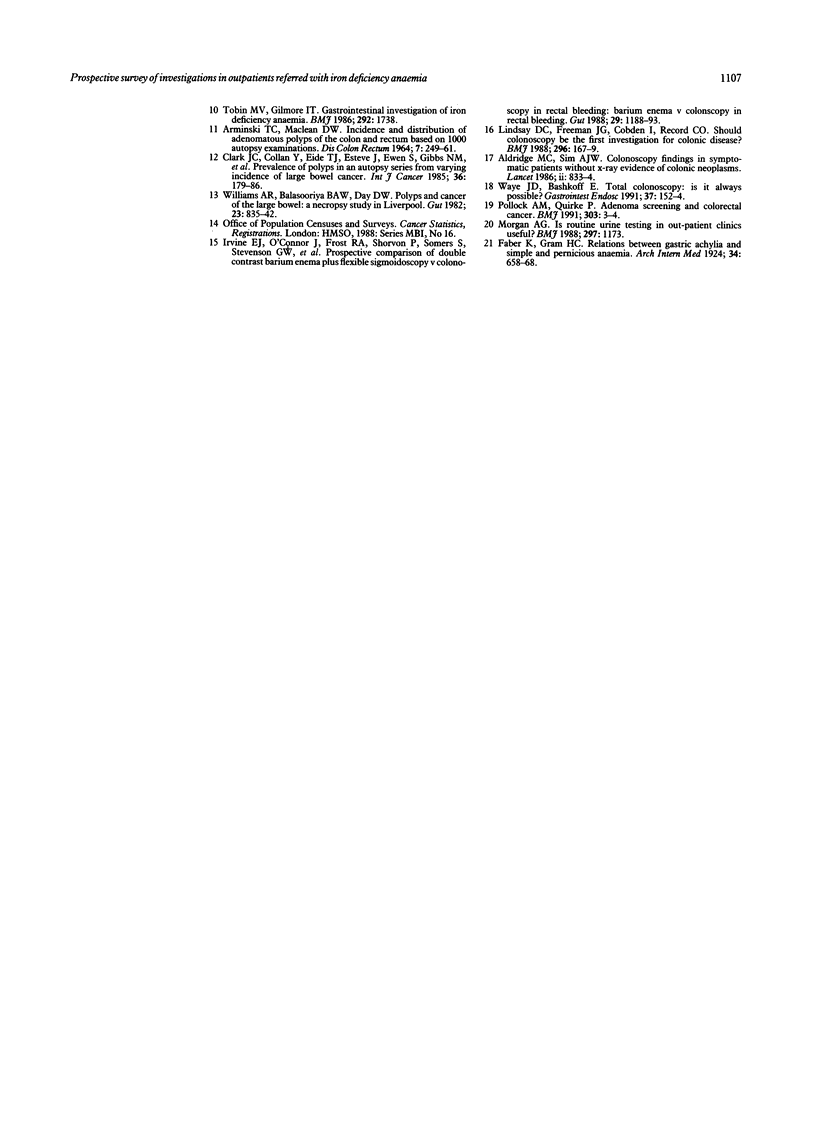
Selected References
These references are in PubMed. This may not be the complete list of references from this article.
- ARMINSKI T. C., MCLEAN D. W. INCIDENCE AND DISTRIBUTION OF ADENOMATOUS POLYPS OF THE COLON AND RECTUM BASED ON 1,000 AUTOPSY EXAMINATIONS. Dis Colon Rectum. 1964 Jul-Aug;7:249–261. doi: 10.1007/BF02630528. [DOI] [PubMed] [Google Scholar]
- Aldridge M. C., Sim A. J. Colonoscopy findings in symptomatic patients without X-ray evidence of colonic neoplasms. Lancet. 1986 Oct 11;2(8511):833–834. doi: 10.1016/s0140-6736(86)92869-2. [DOI] [PubMed] [Google Scholar]
- BEVERIDGE B. R., BANNERMAN R. M., EVANSON J. M., WITTS L. J. HYPOCHROMIC ANAEMIA. A RETROSPECTIVE STUDY AND FOLLOW-UP OF 378 IN-PATIENTS. Q J Med. 1965 Apr;34:145–161. [PubMed] [Google Scholar]
- Calvey H. D., Castleden C. M. Gastrointestinal investigations for anaemia in the elderly: a prospective study. Age Ageing. 1987 Nov;16(6):399–404. doi: 10.1093/ageing/16.6.399. [DOI] [PubMed] [Google Scholar]
- Clark J. C., Collan Y., Eide T. J., Estève J., Ewen S., Gibbs N. M., Jensen O. M., Koskela E., MacLennan R., Simpson J. G. Prevalence of polyps in an autopsy series from areas with varying incidence of large-bowel cancer. Int J Cancer. 1985 Aug 15;36(2):179–186. doi: 10.1002/ijc.2910360209. [DOI] [PubMed] [Google Scholar]
- Cook I. J., Pavli P., Riley J. W., Goulston K. J., Dent O. F. Gastrointestinal investigation of iron deficiency anaemia. Br Med J (Clin Res Ed) 1986 May 24;292(6532):1380–1382. doi: 10.1136/bmj.292.6532.1380. [DOI] [PMC free article] [PubMed] [Google Scholar]
- Gastrointestinal investigation of iron deficiency anemia. Br Med J (Clin Res Ed) 1986 Jun 28;292(6537):1738–1738. doi: 10.1136/bmj.292.6537.1738-a. [DOI] [PMC free article] [PubMed] [Google Scholar]
- Irvine E. J., O'Connor J., Frost R. A., Shorvon P., Somers S., Stevenson G. W., Hunt R. H. Prospective comparison of double contrast barium enema plus flexible sigmoidoscopy v colonoscopy in rectal bleeding: barium enema v colonoscopy in rectal bleeding. Gut. 1988 Sep;29(9):1188–1193. doi: 10.1136/gut.29.9.1188. [DOI] [PMC free article] [PubMed] [Google Scholar]
- Lindsay D. C., Freeman J. G., Cobden I., Record C. O. Should colonoscopy be the first investigation for colonic disease? Br Med J (Clin Res Ed) 1988 Jan 16;296(6616):167–169. doi: 10.1136/bmj.296.6616.167. [DOI] [PMC free article] [PubMed] [Google Scholar]
- Morgan A. G. Is routine urine testing in outpatient clinics useful? BMJ. 1988 Nov 5;297(6657):1173–1173. doi: 10.1136/bmj.297.6657.1173. [DOI] [PMC free article] [PubMed] [Google Scholar]
- O'Reilly D., Long R. G. Carcinoma of the colon presenting with dyspepsia. Postgrad Med J. 1987 Mar;63(737):215–216. doi: 10.1136/pgmj.63.737.215. [DOI] [PMC free article] [PubMed] [Google Scholar]
- Pollock A. M., Quirke P. Adenoma screening and colorectal cancer. BMJ. 1991 Jul 6;303(6793):3–4. doi: 10.1136/bmj.303.6793.3. [DOI] [PMC free article] [PubMed] [Google Scholar]
- Riley J. W., Wilson P. C., Grant A. K. Double pathology as a cause of occult gastrointestinal blood loss. Br Med J (Clin Res Ed) 1981 Feb 21;282(6264):626–627. doi: 10.1136/bmj.282.6264.626. [DOI] [PMC free article] [PubMed] [Google Scholar]
- Waye J. D., Bashkoff E. Total colonoscopy: is it always possible? Gastrointest Endosc. 1991 Mar-Apr;37(2):152–154. doi: 10.1016/s0016-5107(91)70674-3. [DOI] [PubMed] [Google Scholar]
- Williams A. R., Balasooriya B. A., Day D. W. Polyps and cancer of the large bowel: a necropsy study in Liverpool. Gut. 1982 Oct;23(10):835–842. doi: 10.1136/gut.23.10.835. [DOI] [PMC free article] [PubMed] [Google Scholar]
- Wroblewski M., Ostberg H. Ulcer disease among geriatric inpatients with positive faecal occult blood test and/or iron deficiency anaemia. A prospective study. Scand J Gastroenterol. 1990 May;25(5):489–495. doi: 10.3109/00365529009095520. [DOI] [PubMed] [Google Scholar]


